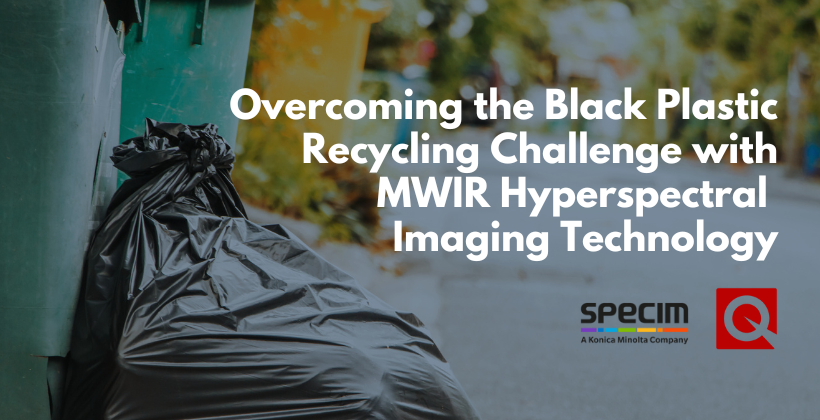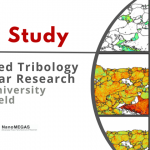
Plastics are indispensable in our daily lives, with global production surpassing 380 million metric tons annually. A considerable proportion of these plastics are black, chosen for their aesthetic appeal, durability, and functionality across high-demand industries such as automotive manufacturing, electronics, and food packaging. However, black plastics pose a significant challenge to recycling due to their light-absorbing properties, which render them “invisible” to traditional recycling methods. This has contributed to the low recycling rate for black plastics, resulting in a growing environmental concern.
Why Do Black Plastics Exist and What Problem Do They Pose?
Black plastics are commonly produced using recycled materials to mask imperfections or inconsistencies in colour. Their production helps divert plastics from landfills by reusing coloured plastics in new applications. However, the carbon black pigmentation that gives these plastics their colour also absorbs light, preventing near-infrared (NIR) technology —commonly used in sorting systems—from detecting them.
This results in improper sorting, with black plastics often being excluded from the recycling stream and sent to landfills, presenting a significant obstacle in a world where governments increasingly impose stricter recycling regulations. Many regions are requiring manufacturers to incorporate higher percentages of recycled plastics into new products, but achieving these targets is challenging without effective solutions for recycling black plastics.
Breakthrough Technology: MWIR Hyperspectral Imaging
Enter mid-wave infrared (MWIR) hyperspectral imaging (HSI)—a revolutionary technology capable of addressing the challenges of black plastic sorting. While traditional near-infrared (NIR) systems operate in the 0.9–1.7 µm range and struggle to detect black plastics due to their light-absorbing carbon black pigments, MWIR HSI operates within the 3–5 µm spectral range, opening up new possibilities for material identification.
In the MWIR range, plastics exhibit distinct spectral features based on their molecular composition. These “spectral fingerprints” enable MWIR HSI to differentiate between various plastics, regardless of colour. Even black plastics, typically invisible to NIR systems, can be reliably identified as their molecular structures reflect light differently in the MWIR spectrum.
By capturing these spectral details, MWIR HSI enables accurate, contact-free, real-time optical sorting of black plastics, significantly enhancing recycling efficiency. This optical method provides an efficient alternative to traditional gravity-based sorting methods, which consume large amounts of water, salt, and other resources, contributing to environmental pollution.
The Specim FX50: MWIR Hyperspectral Imaging in Action
The Specim FX50 hyperspectral camera offers a powerful tool for black plastic sorting. It is the only hyperspectral camera on the market that covers the full MWIR spectral range of 2.7–5.3 μm, required for accurately sorting black plastics.
The Specim FX50 allows fast and reliable sorting of:
- Black plastics
- Rubbers
- Non-black plastics and rubbers
Specifically designed for industrial applications, the Specim FX50 leverages push-broom technology to precisely identify plastics and rubbers at high speeds, enabling high-throughput sorting on conveyor belts. In a real-world scenario, it can process up to 300 kg of plastic flakes per minute with nearly 99 % accuracy, drastically improving sorting speed and efficiency.

Real-World Applications and Industry Benefits
Industries that heavily rely on black plastics—such as automotive, electronics, and packaging—stand to gain the most from this breakthrough technology. For instance, black plastics are used extensively in dashboards, bumpers, and trim components in the automotive industry. By enabling effective sorting of these materials, MWIR HSI can help automotive manufacturers meet their recycling goals and reduce the environmental impact of vehicle production.
In the electronics industry, black plastic casings are ubiquitous in everything from smartphones to home appliances. With MWIR hyperspectral imaging, recyclers can efficiently sort black plastics from discarded electronics, helping manufacturers comply with increasingly stringent e-waste regulations.
The food packaging industry also stands to benefit. Black plastic trays are commonly used for ready-to-eat meals and other food products. By enabling more effective sorting of these trays, MWIR HSI helps reduce the amount of food packaging waste that ends up in landfills.
Environmental and Economic Benefits of Recycling Black Plastics
The ability to sort and recycle black plastics brings significant environmental and economic benefits. Recycling black plastics prevents them from being sent to landfills or incinerators, reducing environmental pollution and conserving valuable resources. It also helps to close the loop on plastic waste, supporting the transition to a circular economy where materials are reused rather than discarded.
Economically, recycling black plastics offers cost savings for manufacturers. The ability to reuse black plastics in new products reduces the need for virgin materials, lowering production costs. At the same time, businesses can avoid penalties for non-compliance with recycling regulations, making MWIR HSI an economically viable solution for companies looking to stay competitive in an increasingly eco-conscious market.
Alignment with Global Sustainability Goals
The integration of MWIR hyperspectral imaging technology into recycling processes not only benefits individual industries but also aligns with broader global sustainability goals. The United Nations’ Sustainable Development Goals (SDGs), particularly Goal 12 (Responsible Consumption and Production), emphasise the importance of reducing waste and increasing resource efficiency. MWIR hyperspectral imaging helps industries comply with these goals and regulations and contribute to a more sustainable future by enabling the efficient recycling of black plastics.
Additionally, as more countries adopt extended producer responsibility (EPR) schemes, which place the onus on manufacturers to manage the lifecycle of their products, including disposal and recycling, MWIR HSI technology will become a critical tool for meeting regulatory requirements. In regions like Europe, where such regulations are already in place, the adoption of this technology can give companies a competitive edge.
Conclusion: A New Era for Black Plastic Recycling
The introduction of MWIR hyperspectral imaging technology, exemplified by the Specim FX50, marks a turning point in recycling black plastics. By addressing the challenges posed by traditional NIR systems and alternative non-optical sorting solutions, this breakthrough technology enables the efficient sorting of black plastics, helping to reduce landfill waste, support circular economy initiatives, and align with global sustainability goals.
As industries across the automotive, electronics, and packaging sectors continue to grapple with the complexities of recycling black plastics, MWIR HSI offers a forward-thinking, environmentally responsible, and economically viable solution. By embracing this technology, industry leaders, policymakers, and sustainability advocates can drive meaningful progress in the fight against plastic waste and pave the way for a more sustainable future.

About the Author
Minna Törmälä holds a PhD in Business from Oulu University Business School and leads global marketing and demand generation at Specim.


Want to know more…?
To discuss your application, get in touch with our Technical Sales Manager, Dr. Luke Nicholls by email below or call (01372) 378822.











